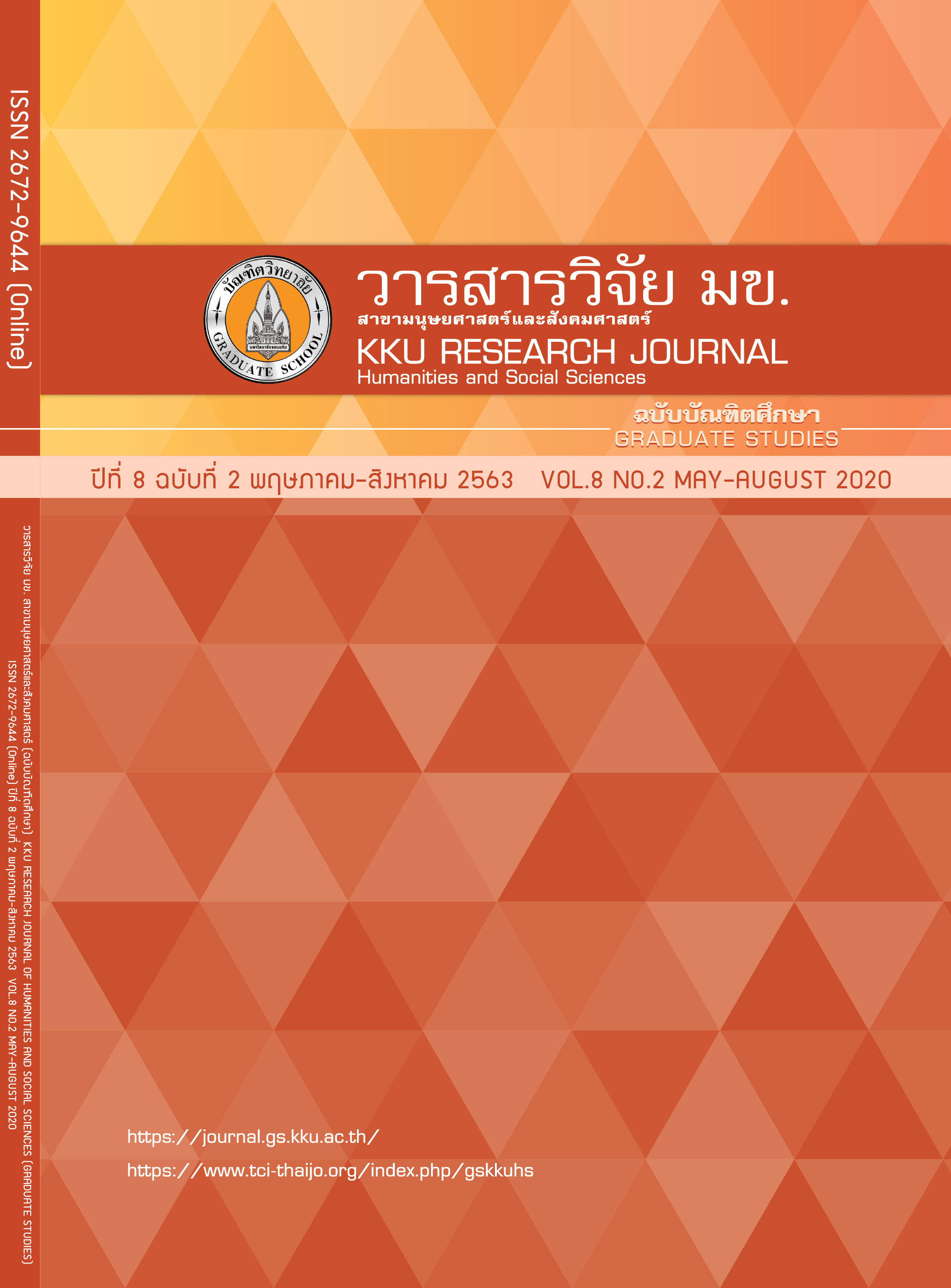กลยุทธการค้าและกลุ่มหลักทรัพย์ที่เหมาะที่สุดโดยใช้ซัพพอร์ทเวกเตอร์แมชชีน: การศึกษาเชิงประจักษ์ในตลาดหลักทรัพย์แห่งประเทศไทย
คำสำคัญ:
กลยุทธการค้า, กลุ่มหลักทรัพย์ที่เหมาะที่สุด, ซัพพอร์ทเวกเตอร์แมชชีนบทคัดย่อ
การลงทุนในหลักทรัพย์นั้นจำเป็นต้องมีความรู้และความเข้าใจในตัวแปรทางการเงิน โดยตัวแปรทางการเงิน ซึ่งปัจจุบันมีหลายองค์กรนำวิธีการต่างๆ เพื่อสร้างดัชนีเพื่อดูผลตอบแทน แต่ทั้งนี้การสร้างดัชนีดังกล่าวไม่ได้แสดงให้นักลงทุนได้เห็นว่าหลักทรัพย์นั้นมีลักษณะอย่างไร ซึ่งการนำกระบวนกลุ่มหลักทรัพย์ในขั้นตอนวิธี (Algorithm) ที่เรียกว่า ซัพพอร์ทเวกเตอร์แมชชีน (Support Vector Machine) มาช่วยแบ่งแยกหมวดหมู่ของตัวแปรทางการเงินให้แสดงอยู่ในรูปแบบตัวเลขหนึ่ง โดยเป็นตัวเลขบ่งบอกถึงลักษณะของหลักทรัพย์ในแต่ละด้านตามหมวดหมู่ที่ถูกแบ่งไว้ ซัพพอร์ทเวกเตอร์แมชชีนเป็นหนึ่งในกระบวนกลุ่มหลักทรัพย์ โดยการศึกษาครั้งนี้ได้นำเสนอวิธีการสร้างกลุ่มหลักทรัพย์จากการคัดเลือกโดยผลคะแนนตามหมวดหมู่ที่ถูกวิเคราะห์มาจากขั้นตอนวิธีนี้ ซึ่งได้แบ่งออกเป็นทั้งหมด 6 หมวดหมู่ ได้แก่ หมวดหมู่คุณค่า หมวดหมู่ความสามารถในการทำกำไร หมวดหมู่เติบโต หมวดหมู่สินทรัพย์และหนี้สิน หมวดหมู่สภาพคล่อง และหมวดหมู่ดำเนินงาน ภายในแต่ละหมวดก็จะประกอบไปด้วยตัวแปรทางการเงินหลายตัวด้วยกัน ตัวเลขที่ได้จากการวิเคราะห์จะนำมาทดสอบ ซึ่งในแต่ละหลักทรัพย์จะมีคะแนนอยู่ครบทั้ง 6 หมวดหมู่ แต่ในการศึกษาครั้งนี้ได้ทำการคัดเลือกผลคะแนนสูงสุดในแต่ละหมวดหมู่มาสร้างเป็นกลุ่มหลักทรัพย์แยกตามแต่ละหมวด เพื่อแสดงให้เห็นว่าหากคัดเลือกผลลัพธ์โดยพิจารณาเป็นรายหมวดหมู่ หมวดใดสามารถสร้างผลตอบแทนได้ดีกว่าดัชนีของตลาดหลักทรัพย์แห่งประเทศไทยได้บ้าง การวิจัยในการศึกษาครั้งนี้ ผู้วิจัยเล็งเห็นถึงความสำคัญในการสร้างผลคะแนนที่เอื้อประโยชน์ต่อการวิเคราะห์ของนักลงทุนอันนำไปสู่การสร้างผลตอบแทนที่ดีในอนาคต จากการคัดเลือกภายใต้หมวดหมู่ที่ถูกแบ่งไว้ โดยแสดงผลลัพธ์ทั้งรูปแบบหลักทรัพย์และคะแนนที่ได้จากการเลือกโดยซัพพอร์ทเวกเตอร์แมชชีนและผลตอบแทนจากแต่ละหมวด
เอกสารอ้างอิง
for stock prediction: Union, intersection, and multi-intersection approaches.
Decision Support Systems. 2010; 50(1): 258-269.
2. Thaler RH. The end of behavioral finance. Financial Analysts Journal.
1999; 55(6): 12-17.
3. Barberis N, Huang M. Mental accounting, loss aversion, and individual
stock returns. The Journal of Finance. 2001; 56(4): 1247-1292.
4. Enke D, Thawornwong S. The use of data mining and neural networks
for forecasting stock market returns. Expert Systems with Applications.
2005; 29(4): 927-940.
5. Cristianini N, Shawe-Taylor J. An introduction to support vector machines
and other Kernel-based learning methods. Cambridge, UK: Cambridge University
Press; 2000.
6. Zhang X, Hu Y, Xie K, Wang S, Ngai EWT, Liu M. A causal feature selection
algorithm for stock prediction modeling. Neurocomputing. 2014; 142: 48-59.
7. Yu H, Chen R, Zhang G. A SVM stock selection model within PCA. Procedia
Computer Science. 2014; 31: 406-412.
8. Fama EF. Efficient capital markets: A review of theory and empirical work.
The Journal of Finance. 1970; 25(2): 383-417.
9. Fama EF. Efficient capital markets: II. The Journal of Finance.
1991; 46(5): 1575-1617.
10. Huang C-L, Tsai C-Y. A hybrid SOFM-SVR with a filter-based feature
selection for stock market forecasting. Expert Systems with Applications.
2009; 36(2, Part 1): 1529-1539.
11. Yap BC-F, Mohamad Z, Chong K-R. The application of principal
component analysis in the selection of industry specific financial ratios.
British Journal of Economics, Management & Trade. 2013; 3(3): 242-252.
12. Patel J, Shah S, Thakkar P, Kotecha K. Predicting stock market index
using fusion of machine learning techniques. Expert Systems with
Applications. 2015; 42(4): 2162-2172.
13. Gerlein EA, McGinnity M, Belatreche A, Coleman S. Evaluating
machine learning classification for financial trading: An empirical
approach. Expert Systems with Applications. 2016; 54: 193-207.
14. Suteetasana S. Optimal technical trading rules on SET50 Index:
Support Vector Machine and econometrics approach. Faculty of
Commerce and Accountancy: Thammasat University; 2011.




